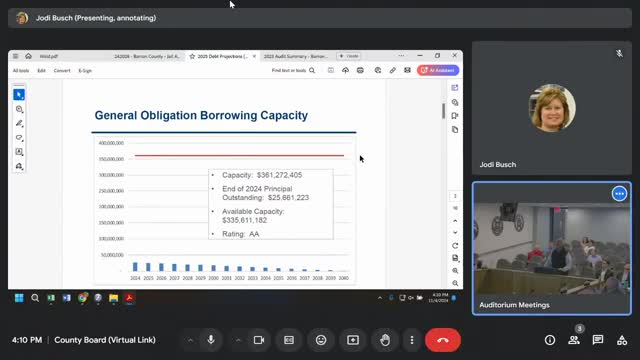Barron County explores new $8.9M bond options for infrastructure projects
March 27, 2025 | Barron County, Wisconsin
Thanks to Scribe from Workplace AI , all articles about Wisconsin are free for you to enjoy throughout 2025!

This article was created by AI using a video recording of the meeting. It summarizes the key points discussed, but for full details and context, please refer to the video of the full meeting. Link to Full Meeting
The county's bond rating stands at a commendable double-A level, indicating strong financial management and a favorable outlook for securing low-interest rates on future loans. While achieving a triple-A rating is rare, county officials believe that aiming for a double-A plus rating is within reach, contingent on factors such as local demographics and economic growth.
During the meeting, officials reviewed two potential borrowing options, including a proposed $5.93 million loan for a Sally Port project and refinancing existing debt. The first option would slightly increase the annual debt levy from about $2 million to approximately $2.66 million, raising the mill rate from 29 cents to 38 cents per $1,000 of property value. A second option, which includes an additional $3 million for HVAC improvements at the University of Wisconsin-Barron County, would further increase the annual debt levy to about $2.89 million, resulting in a mill rate of 41 cents.
For homeowners, this translates to an estimated increase of $23.89 in annual debt costs for a property valued at $250,000 under the first option, and $31.97 if the HVAC project is included. These figures are based on conservative projections, assuming no growth in the county's property values.
As Barron County navigates these financial decisions, officials emphasize the importance of maintaining a balanced budget and managing debt responsibly to ensure long-term sustainability and community development. The board is expected to finalize its borrowing strategy in early 2025, with the first payments due in 2026.
Converted from County Board 2024/11/04 meeting on March 27, 2025
Link to Full Meeting
Comments
View full meeting
This article is based on a recent meeting—watch the full video and explore the complete transcript for deeper insights into the discussion.
View full meeting